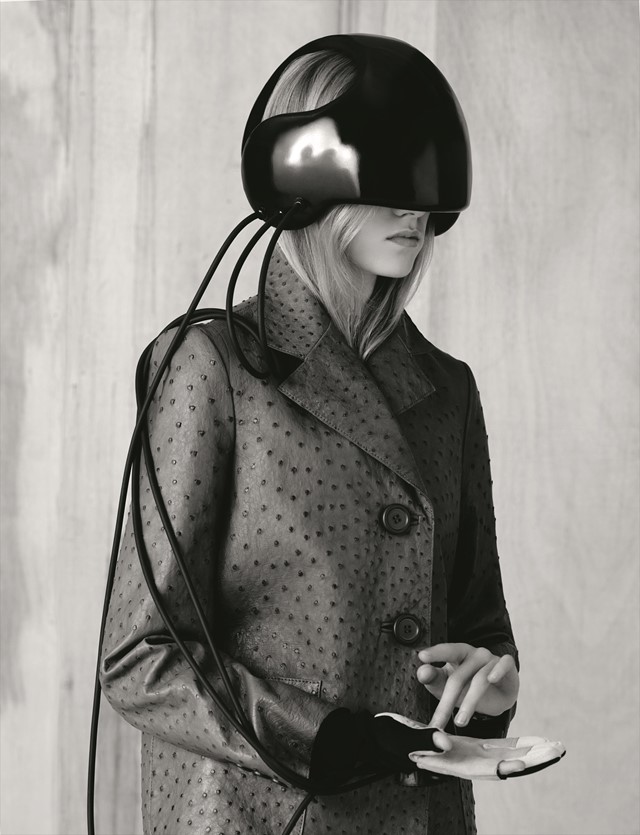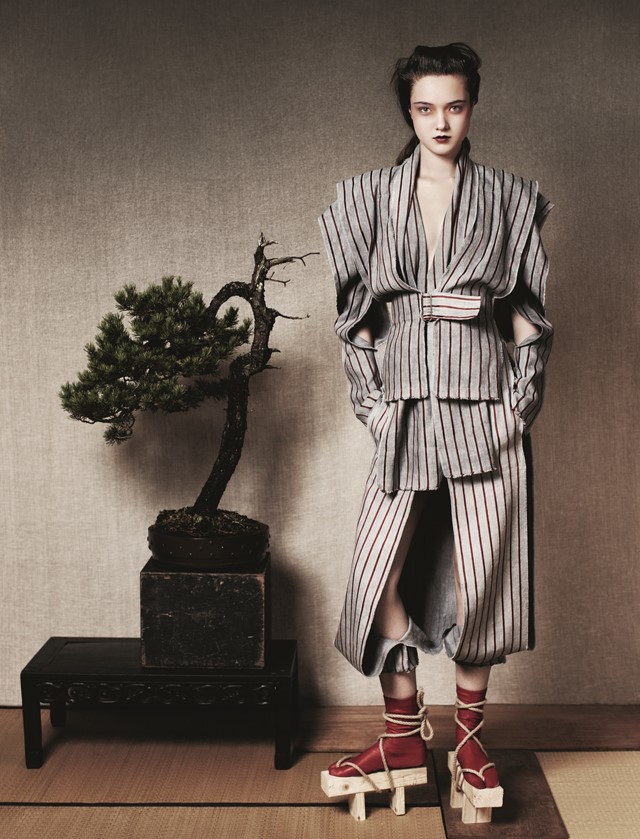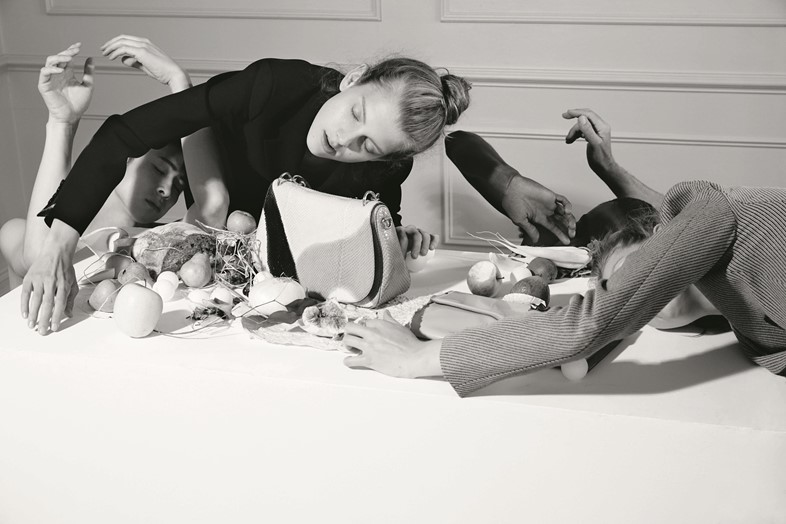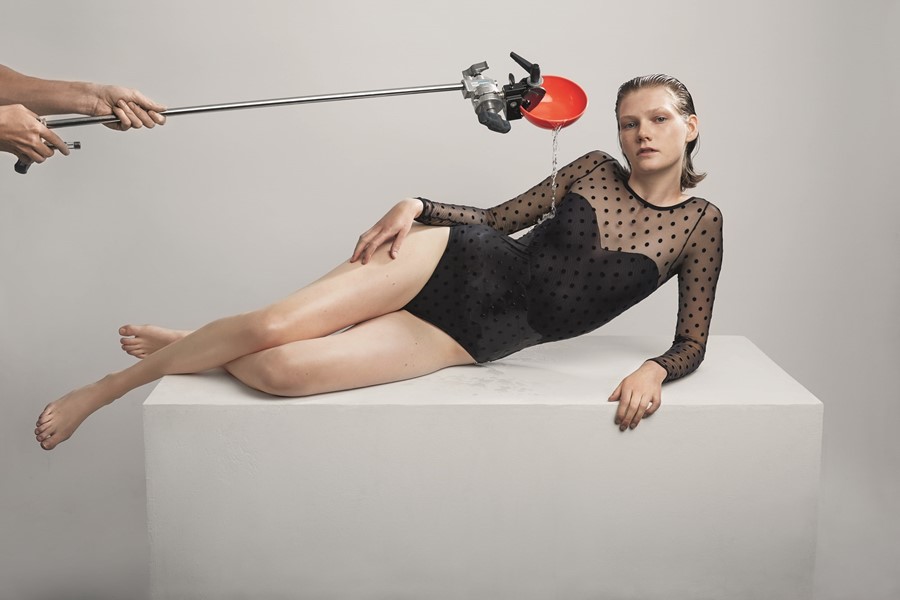We speak to the set designer whose work for the likes of Simone Rocha, Ben Toms and Grace Wales Bonner has established her as one of London's luminaries
When Grace Wales Bonner opened her A/W16 show, it was with a young man perched atop a stool delicately playing a kora. The stool sat upon a miniature wooden stage, to which each of the models bowed before making their runway procession. Little crucifixes were placed next to the musician's bare feet, and a wooden contraption inspired by Congolese sculptor Bodys Isek Kingelez supporting his stringed instrument. He was, in the words of the accompanying show notes, “a griot”: a man who “acts as ancient master of ceremonies calling upon West African ancestral traditions and black musical ritual to impart timeless wisdom, cleanse the mind, elevate consciousness.” His presence set the tone for the collection itself, and the scenography he sat among was constructed by Janina Pedan, a woman whose creations have, over the past few years, been setting the stage for many a beautifully-considered performance or fashion story. While, as a set designer, Pedan decidedly works behind the scenes, her impact in the industry is very much at the fore of the avant-garde, occupying a pivotal role in the new era of collaboration that is making waves in London.
(Above image: AnOther Magazine A/W15, Photography by Charlie Engman, Styling by Agata Belcen, Set design by Janina Pedan)

If there was anything to be learned from the MAN presentation space that Wales Bonner's show occupied – a succession of three young designers’ shows, each supported by the Topshop initiative – it was that fashion is returning to the sense of collectivity that it was once rooted in. There is no sense of competition about it; Rory Parnell-Mooney even laughed backstage that, late the night before, Charles Jeffreys had nipped round to print out his show notes (his own printer had broken at the final hour). Each of the designers that Pedan works with – whether Simone Rocha, Claire Barrow or Wales Bonner – has a similar approach to creativity: that it is borne from reflection and mutual appreciation rather than cut-throat competition. “When I do my more commercial shoots and I realise how the rest of the industry works, I’ve been shocked,” explains Pedan, “because I’ve been in, I suppose, quite a protective bubble made up of people who are really nice; interesting, normal people who don’t have anything to prove.” It was one of these “normal people” who gave Pedan her break into fashion: Ben Toms, a photographer who afforded her the support and creativity to move from her career as an artist into one of set design by incorporating her skills into his shoots for the likes of AnOther Magazine and Dazed. “I’m so grateful for the amount of trust that he put in me at the beginning,” she says. “And the patience – because I didn’t know how to make things, so I had to YouTube a lot of tutorials. It was very much touch and go, but he believed in me.”

Meeting Pedan, you can sort of understand why he did. She is softly spoken, each of her sentences thoroughly considered; she is magnetic in her unassuming charm. The body of her work shows parity to her physical presence: it is thoughtful and precise, never overwrought, always respectful of the creations it supports. Whether she is creating a Japanese-inspired set for AnOther Magazine’s Lea Seydoux cover story, or the window displays and assortment of furnishings for Simone Rocha’s Mount Street store, her work is simultaneously quiet yet powerful: through its economy, it speaks volumes. In an industry that can often be seen to celebrate a brash loudness, it is utterly refreshing. “In fashion, you meet so many people with attitude,” she reflects. “They’re so unnecessarily horrible and have this really strong hierarchical approach about where you belong. That’s so discouraging; if you have creative intentions – especially if you’re new – then you want to try things out, and see if it works. You need to have someone open-minded to pick up on that; someone like Ben, or Grace, or Simone. They are a great antidote to that side of the industry, and I feel like they’re doing something meaningful, somehow, not just putting out a ton of collections or pictures.”

At a time when the acceleration of fashion, and a heavy focus on profit margins and conglomerate takeovers, is making headlines, Pedan and her new guard of collaborators are offering a different way of working. Wales Bonner takes two months of the year to travel for inspiration; Toms travels similarly; Rocha is yet to show a pre-collection and each of her shows exhibits a development on her signature – "I feel like she approaches fashion more like an artist developing a theme, rather than just showing random collection after random collection," Pedan reflects. During a period that seems make-or-break for an industry losing its creative directors at an unprecedented level, the people that Pedan affiliates herself with are challenging the pace and aggression of the mainstream. "I think the fashion industry – and society in general – has become more extreme recently," she says. "Post-recession, we don't have a cushion protecting us anymore, and that makes people question their value systems and look at what it is that actually matters to them."

While Pedan might once have questioned these systems through art installations and critical theory (she studied Fine Art at Goldsmiths before being afforded a grant from the Swedish Art Council permitting her free creative reign), she now executes her set design with a similarly thoughtful approach. Born in Ukraine before moving to Sweden, London relieves Pedan from the "social claustrophobia" of Stockholm: "in London, you just move from one area to the next and no one knows who you are. There's a pleasurable type of freedom that comes with that." It is this cosmopolitan eclecticism and openness that marks her work, and that of her collaborators, each challenging hegemony in their own unique way. "We were born into the world that we’re in," she summates, "but it doesn't mean we can’t try to change the situation, because it's not working for the majority of the world. Some people might have something to lose if things change, but I don't think creativity is one of them." And, if we look at the new movement emerging – whether that's the success of Grace Wales Bonner's sabbaticals, or the resounding acclaim bestowed upon Rocha's bi-annual signature (which translates not only into media coverage but equally sales) – it seems as though they have the right idea.
